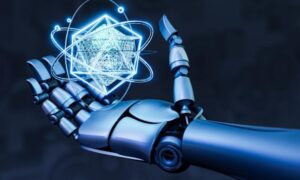Legacy Systems: Hidden Threat or Strategic Asset?
In 2024, global enterprises face a technological paradox: their most business-critical processes – from transaction processing to logistics management – still rely on software architectures built decades ago. According to a McKinsey report published on 2 December 2024, over 70% of Fortune 500 companies continue to operate on systems developed more than 20 years ago.
These legacy platforms were designed with reliability and fault tolerance in mind. Yet, today they have become systemic constraints on scalability, integration, cybersecurity compliance and regulatory agility.
“Companies are literally balancing between technological stability and strategic stagnation. Legacy systems are not just old code – they are layers of embedded business logic accumulated over years, often undocumented and deeply interdependent. You can’t simply ‘rewrite’ them; they must be treated as digital heritage that demands intelligent transformation, not destruction,”
explains Dmytro Rumiantsev, an IT architect and expert with over 30 years’ experience in international technology corporations.

A Pioneer of Digital Transformation
Dmytro Rumiantsev is recognised as one of the key architects of Ukraine’s digital transformation. His career began in the 1990s when he contributed to the creation of the first Ukrainian search engine and early online education infrastructure.
In 2003, he led the development of one of Ukraine’s first large-scale corporate e-learning systems, which became a foundation for the country’s digital education culture. Thousands of professionals undertook financial literacy and e-payment training through this platform. Among the clients were the National Bank of Ukraine, Ministry of Finance, State Employment Service, Azovstal Steel Plant, Ukrsotbank, and other major commercial banks.
Rumiantsev focuses on developing digital infrastructure, implementing advanced technologies, and creating sustainable transformation strategies for both public and corporate sectors.
Why Modernisation Is Now a Business Imperative
According to Rumiantsev, piecemeal IT initiatives are no longer enough; businesses must begin to manage their digital assets strategically. He advocates starting with a full audit of legacy systems, developing modernisation roadmaps, establishing internal digital competency centres, and adopting modular, microservice-based architectures with open APIs. This evolutionary approach allows companies to upgrade incrementally, minimising disruption while building a resilient technological foundation for growth.
Modern enterprises are facing a convergence of challenges that make modernisation not optional but essential.
Rising cybersecurity threats, new compliance standards across the EU and US, and a global shortage of specialists proficient in COBOL and other legacy languages have dramatically increased maintenance costs. Regulatory frameworks related to ESG, tax transparency, and digital auditability demand agility that monolithic systems cannot deliver. Meanwhile, the accelerating pace of product development means that legacy-bound organisations can no longer keep up with the rhythm of the modern economy.
“For companies that have postponed modernisation, doing nothing has become a major management risk,” emphasises Rumiantsev.
“Legacy systems fail under pressure – whether in terms of security, speed or maintenance cost. Modernisation should not be about technology for its own sake, but about business resilience.”
From Banks to Broadcasting: Transformation Without Destruction
The true value of modernisation is best seen through real case studies – where technological decisions directly determined corporate resilience. Rumiantsev has repeatedly demonstrated that even the most complex legacy infrastructures can be transformed safely with engineering precision and strategic foresight.
One of the most illustrative examples involves a major Ukrainian bank whose credit-scoring platform was technologically frozen in time. Rather than dismantling it entirely, Rumiantsev proposed a strategy of “careful transformation”: preserving the core logic while wrapping it within a microservice architecture and new API layers.
The outcome was a modern, flexible platform integrating data from dozens of external sources, including the national Ukrainian digital portal Diia. The time for credit decision-making dropped from several days to mere minutes – and the system is now regarded as a benchmark in the Ukrainian FinTech market.
Later, in the United States, Rumiantsev applied the same principle while working with SiriusXM, North America’s largest satellite radio network. By introducing AI-driven tools for automated testing and code analysis, his team reduced human intervention across 90% of critical scenarios. This not only improved quality but also accelerated release cycles and reduced error rates, establishing a new standard of operational efficiency.
His path, however, began long before. In the early 2000s, he led the team that developed Ukraine’s first large-scale corporate distance-learning system – robust enough to operate even on slow internet connections. The project became a precursor to modern digital universities and shaped e-learning for years ahead.
What unites these achievements is Rumiantsev’s ability to see in outdated technology not an obstacle but a resource. His philosophy of modernisation is not about dismantling the past, but turning technological legacy into a foundation for future growth and competitive advantage.
Common Pitfalls in Legacy Modernisation
Over decades of practice, Rumiantsev has collected an extensive catalogue of cases where digital transformation projects have failed. He was among the first to systematically identify the recurring mistakes that undermine even the most promising initiatives.
The biggest trap, he says, remains faith in the “rip-and-replace” approach – the so-called Big Bang strategy of demolishing old systems and rebuilding from scratch. In practice, this often results in technological chaos and business paralysis.
When overseeing the phased modernisation of a fraud-monitoring platform for a major European bank, Rumiantsev’s team instead preserved the existing business logic and built new interfaces and integrations around it. As a result, the bank completed its transformation without a single operational failure.
Another recurring issue, he notes, is the underestimation of testing.
“You can’t safely modernise what you can’t properly test,” says Rumiantsev.
At SiriusXM, his team solved this challenge using AI-generated test cases, automating validation across 90% of critical workflows and minimising human error.
A further mistake lies in disconnecting technology from business outcomes. Rumiantsev insists that every modernisation initiative must be tied to measurable metrics – faster customer service, reduced operating costs or increased profitability. This, he argues, is the difference between “modernisation for progress” and modernisation for performance.
Finally, he highlights the human factor.
“DevOps is not a toolkit – it’s a mindset,” he stresses.
No digital transformation can succeed without reskilling teams and evolving corporate culture. Without this, even the most advanced technology simply transfers old problems into a new environment.
Four Steps to Safe Modernisation
Dmytro Rumiantsev’s experience demonstrates that successful digital transformation is not built on theory. Drawing on dozens of completed projects, he has developed a clear, step-by-step approach that enables complex IT systems to be updated without halting business operations or losing data.
At the core of his method lies a gradual process of wrapping existing solutions in modern API layers, allowing new services to be introduced without dismantling the accumulated business logic. Verification of changes is automated through artificial intelligence models that generate test cases based on user scenarios and activity logs, significantly accelerating update validation.
Instead of measuring progress by the volume of rewritten code, Rumyantsev focuses on tangible business metrics – speed, reliability and customer satisfaction.
Finally, he considers the preservation of institutional knowledge a crucial component of success: within teams, so-called “system archaeologists” are formed to document the logic of legacy code and ensure continuity.
Such an approach transforms modernisation from a source of risk into a process of evolution.
Modernisation as Risk Management
For Rumiantsev, digital transformation is not a trend but a form of risk governance.
“Legacy is not a burden; it is a strategic asset. Effective modernisation extracts business value from it while preserving resilience and control,” he concludes.
This philosophy runs through all his projects. His AcadEx platform laid the foundation for Ukraine’s distance-learning culture. His banking modernisations set new FinTech benchmarks. And his work with SiriusXM and Luxoft USA has shown how artificial intelligence and DevOps can literally rescue mission-critical systems from technological decay.
That is why, within professional circles, Dmytro Rumiantsev is often described not merely as an engineer but as an architect of digital continuity – a specialist who helps organisations face the future confidently, without losing the strength of their past.



































